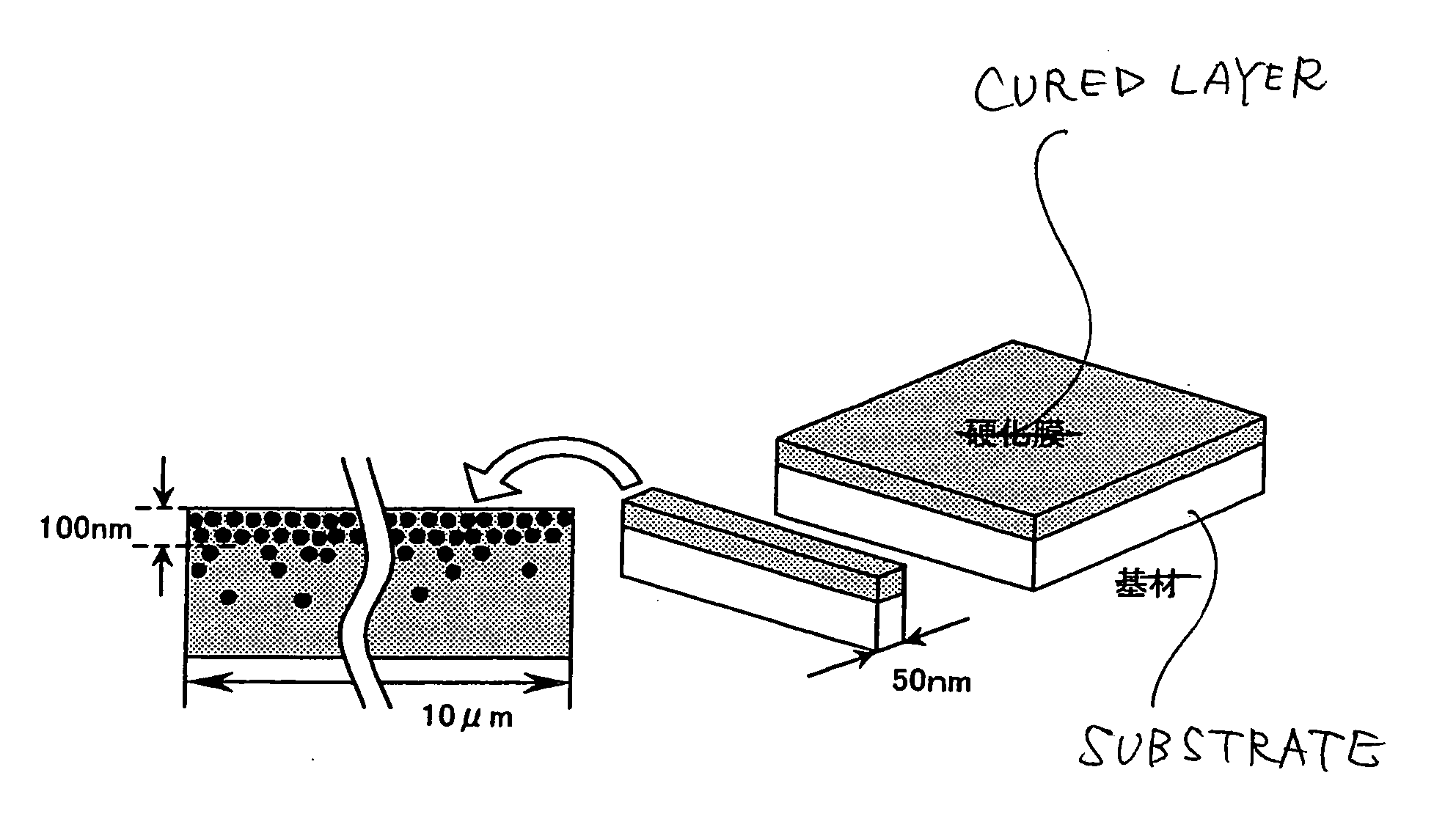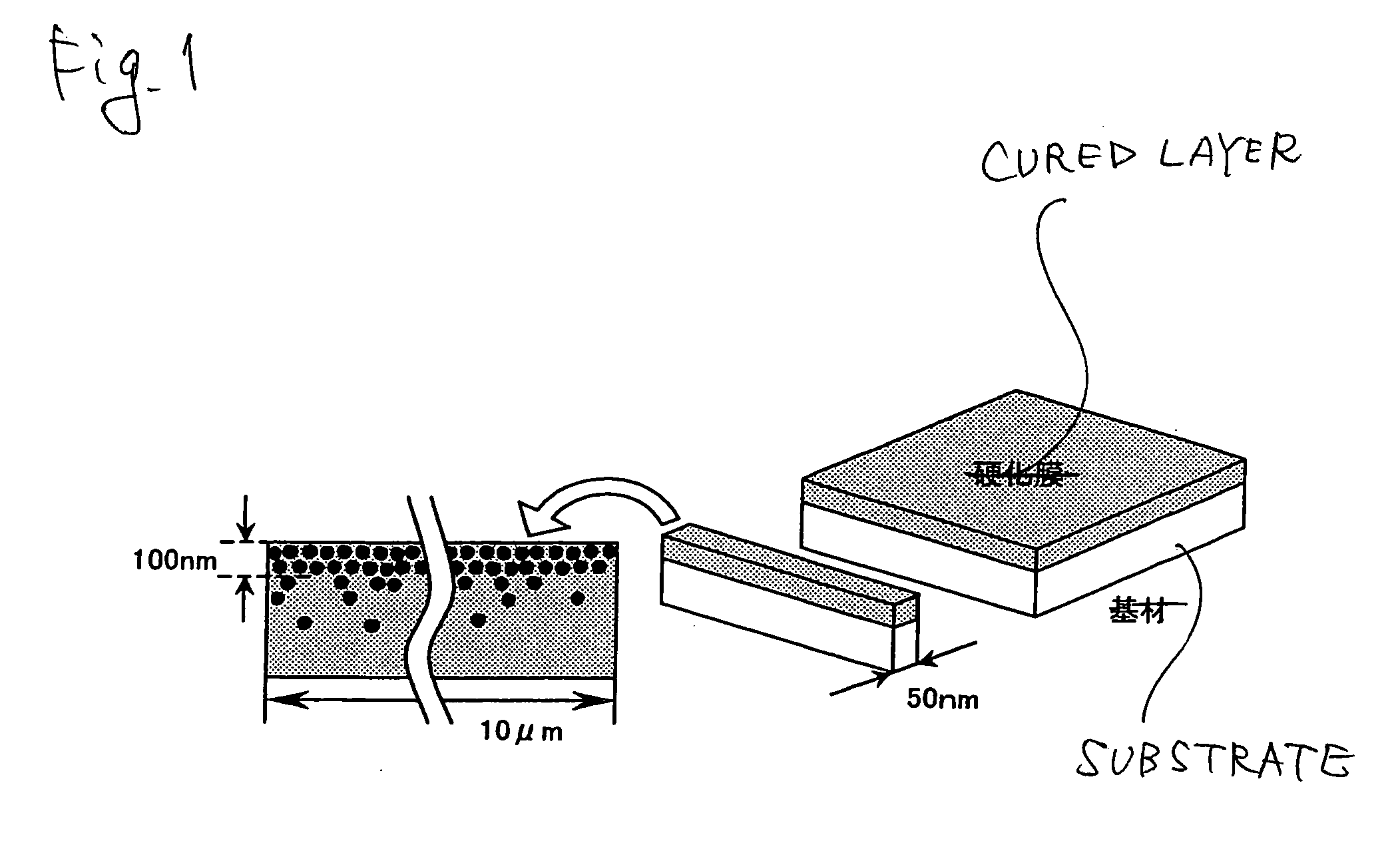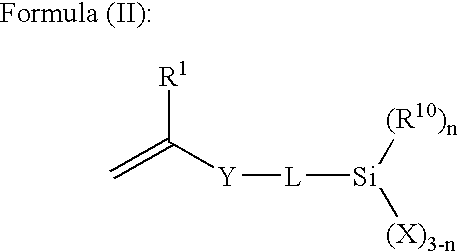Optical film, polarizing plate and image display device
a technology of optical film and polarizing plate, which is applied in the field of optical film, polarizing plate and image display device, can solve the problems of reducing productivity and preventing more cost reduction in the wet coating process, affecting the appearance of optical film, etc., and achieves excellent scratch resistance and anti-reflection properties. high
- Summary
- Abstract
- Description
- Claims
- Application Information
AI Technical Summary
Benefits of technology
Problems solved by technology
Method used
Image
Examples
example 1-1
[0282] A 1,340 mm-wide and 2,600 m-long triacetyl cellulose film, “TD80U” {produced by Fuji Photo Film Co., Ltd.}, in a roll form was unrolled as the support (substrate), and Coating Solution (HCL-1) for Hardcoat Layer, where surface-modified low refractive index fine particles were added, was coated directly thereon by using a doctor blade and a 50 mm-diameter microgravure roll having a gravure pattern with a line number of 135 lines / inch and a depth of 60 μm, under the condition of a transportation speed of 15 m / min and after drying at 60° C. for 150 seconds, irradiated with an ultraviolet ray at an illumination intensity of 400 mW / cm2 and an irradiation dose of 250 mJ / cm2 by using an air-cooled metal halide lamp of 160 W / cm (manufactured by Eye Graphics Co., Ltd.) while purging the system with nitrogen to keep an oxygen concentration of 1.0 vol % or less, thereby curing the coated layer and forming Hardcoat Layer (HC-1). The resulting film was taken up. After the curing, the rota...
example 1-3
[0284] A 1,340 mm-wide and 2,600 m-long triacetyl cellulose film, “TD80U” {produced by Fuji Photo Film Co., Ltd.}, in a roll form was unrolled as the support (substrate), and Coating Solution (HCL-4) for Hardcoat Layer, where surface-modified low refractive index fine particles were added, was coated directly thereon by using a doctor blade and a 50 mm-diameter microgravure roll having a gravure pattern with a line number of 135 lines / inch and a depth of 60 μm, under the condition of a transportation speed of 15 m / min and after drying at 70° C. for 150 seconds, irradiated with an ultraviolet ray at an illumination intensity of 400 mW / cm2 and an irradiation dose of 250 mJ / cm2 by using an air-cooled metal halide lamp of 160 W / cm (manufactured by Eye Graphics Co., Ltd.) while purging the system with nitrogen to keep an oxygen concentration of 1.0 vol % or less, thereby curing the coated layer and forming Hardcoat Layer (HC-4). The resulting film was taken up. After the curing, the rota...
example 2-1
[0285] A 1,340 mm-wide and 2,600 m-long triacetyl cellulose film, “TD80U” {produced by Fuji Photo Film Co., Ltd.}, in a roll form was unrolled as the support (substrate), and Coating Solution (HCL-5) for Antiglare Hardcoat Layer, where surface-modified low refractive index fine particles were added, was coated directly thereon by using a doctor blade and a 50 mm-diameter microgravure roll having a gravure pattern with a line number of 135 lines / inch and a depth of 60 μm, under the condition of a transportation speed of 15 m / min and after drying at 60° C. for 150 seconds, irradiated with an ultraviolet ray at an illumination intensity of 400 mW / cm2 and an irradiation dose of 250 mJ / cm2 by using an air-cooled metal halide lamp of 160 W / cm (manufactured by Eye Graphics Co., Ltd.) while purging the system with nitrogen to keep an oxygen concentration of 1.0 vol % or less, thereby curing the coated layer and forming Antiglare Hardcoat Layer (HC-5). The resulting film was taken up. After ...
PUM
 Login to View More
Login to View More Abstract
Description
Claims
Application Information
 Login to View More
Login to View More - R&D
- Intellectual Property
- Life Sciences
- Materials
- Tech Scout
- Unparalleled Data Quality
- Higher Quality Content
- 60% Fewer Hallucinations
Browse by: Latest US Patents, China's latest patents, Technical Efficacy Thesaurus, Application Domain, Technology Topic, Popular Technical Reports.
© 2025 PatSnap. All rights reserved.Legal|Privacy policy|Modern Slavery Act Transparency Statement|Sitemap|About US| Contact US: help@patsnap.com



